
This page last modified: 3 January 2016 (Dea vexillata note added)

The following units are listed as being under the command of the Magister Militum per Thracias (i.e. the Master of the Soldiers in Thrace; the numbers in front of the names refer to Ingo Maier's numbering scheme):
|
Vexillationes palatinae III:
18.3 Comites Arcadiaci |
Vexillationes comitatenses:
18.7 Equites catafractarii Albigenses |
Legiones comitatenses:
18.12 Solenses seniores |
Of these, the shields of the 7 cavalry units are not illustrated. The shields of the 21 infantry units listed above are illustrated below from top to bottom, left to right, in the order given, using the Bodleian manuscript (O) pictures.
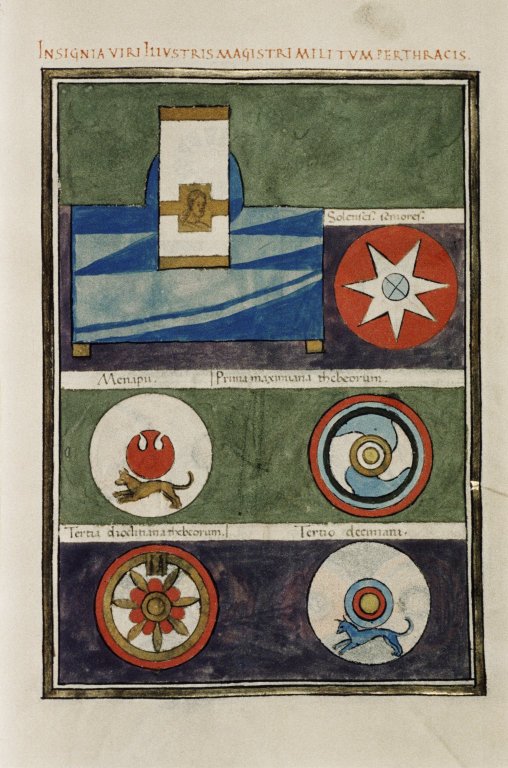
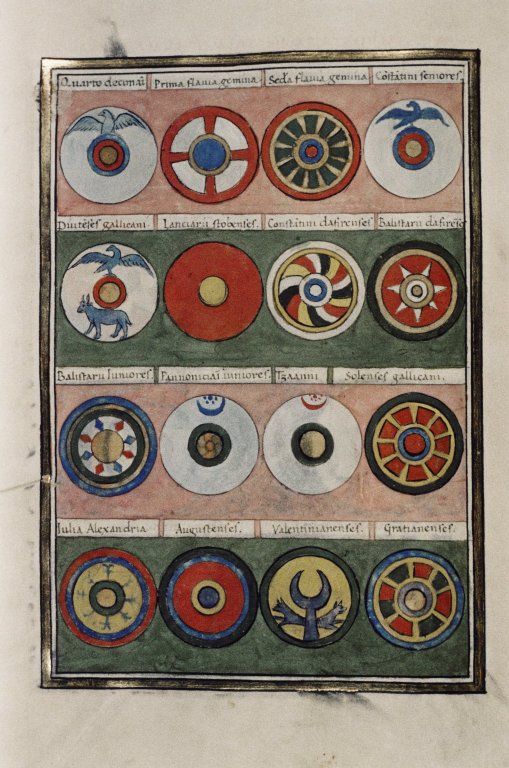
The final (bottom right-hand corner) shield belongs to the Gratianenses, which is not actually listed in the textual list, just illustrated and labelled in the accompanying picture. This, as Jones says, would appear to be one of three related units, the Augustenses (18.30, referring to the eastern Augustus, Valens), the Valentinianenses (18.31, after his elder brother Valentinian I, the western Augustus) and the Gratianenses (after Valentinian I's son Gratian, the Caesar), raised and serving together. It thus seems that as the shield is included, the unit's omission from the list above is simply a mistake (Jones doesn't seem to comment that it is actually missing in the list as written however!). All the infantry units are listed under the legend "Legiones comitatenses", which would make the Thracian field force unique in being the only one without any auxilia palatina (or auxiliares pseudocomitatenses units for that matter). However, all may not be what it seems. In the Magister Militum per Orientem's list, the two auxilia palatina units are not actually listed are such, and the pseudocomitatenses units are enumerated differently in most manuscripts from what is actually listed; a similar situation may apply to the Magister Militum per Thracias. In particular, it may be that the Augustenses, the Valentinianenses, and the Gratianenses were actually auxilia units: their names to me resemble those of auxilia (especially auxilia palatina) units more than they do legionary units. Perhaps these three, raised together, were added as an illustrated block of units at the end of the list for simplicity rather than being inserted in the usual place for auxilia palatina (i.e. before the legiones comintatenses). Alternatively, they may simply had not been given auxilia palatina status, and instead have been pseudocomitatenses units, in which case they would be correctly positioned, and the only problem would be the relatively minor one of a line labelling them as such being missing.
The pattern of the Tertia Diocletiana Thebaeorum (18.15) looks very similar to that of Quinta Macedonica (15.16) under the Magister Militum per Orientem. Perhaps these two detachments were posted simultaneously to the same command and thus received similar shield patterns, but were later separated. Certainly the clearly related patterns of the Tertiodecimani (18.16), the Quartodecimani (18.17), the Constantini seniores (18.20), and the Divitenses Gallicani (18.21), given the seemingly unrelated nature of the units, suggests a simultaneous issuance.
Below are the same units as illustrated in the Parisian manuscript (P).
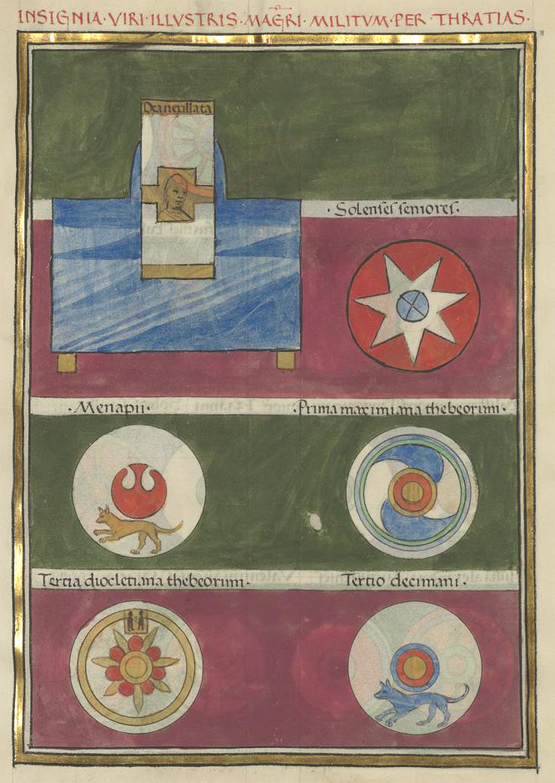

Note the inscription on the codicil: Dea vexillata, which is also found in M and B, but not O or W. Below are the corresponding pictures from the Munich manuscript: first portion (M) on top; second portion (W) below.

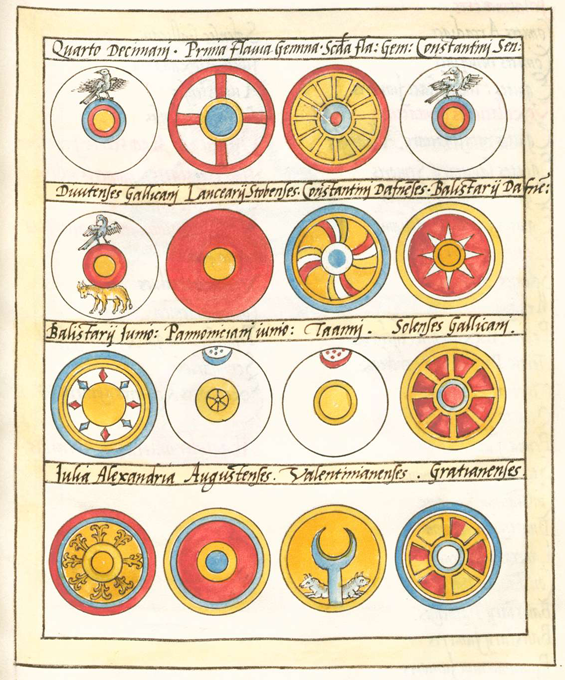
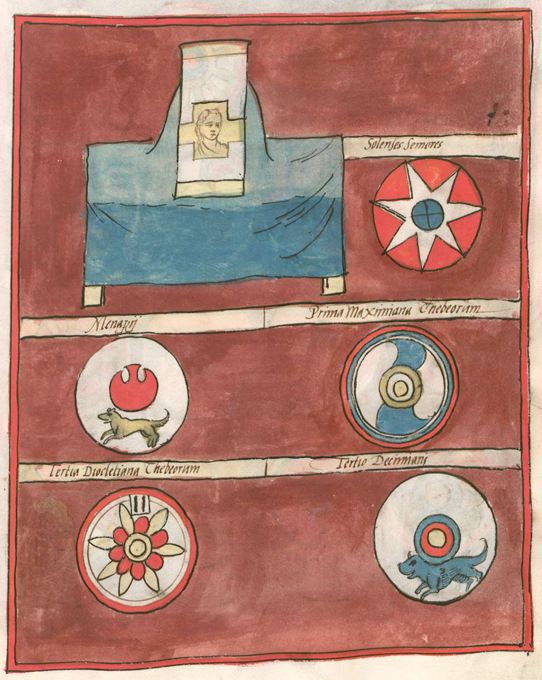
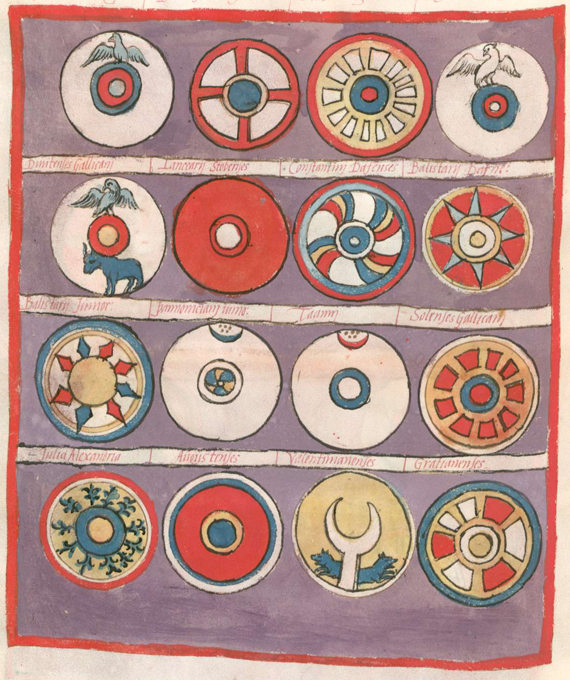
Below are the corresponding pictures from the Froben edition (B):
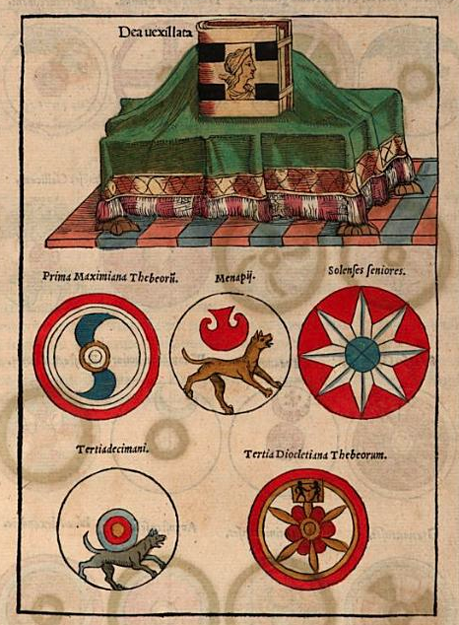
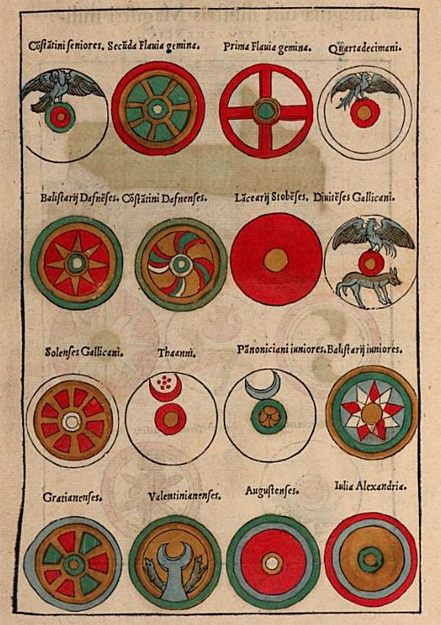
In addition to the units enumerated above, the Notitia gives the Magister's staff as follows:
18.34 A chief of staff (princeps)The Magister's staff are, like those of the first Magister Militum Praesentalis and the Magister Militum per Illyricum, said to be drawn from those enrolled in his force; this differs from the staff of the second Magister Militum Praesentalis and the Magister Militum per Orientem, which are said to be permanent.
18.35 Two accountants (numerarii)
18.36 A custodian (commentariensis)
18.37 Chief clerks (primiscrinios) who become accountants
18.38 Clerks (scriniarios)
18.39 Secretaries (exceptores) and other attendants (apparitores)

1. Maier, Ingo; "Appendix 4: Numeration of the new edition of the compilation 'notitia dignitatum' (Cnd)"; last accessed 26 October 2015. See also for here for numbering examples. Return
2. Jones, A.H.M.; "The Later Roman Empire, 284-602; A Social, Economic, and Administrative Survey"; Blackwell, Oxford, 1964 (3 volumes); at vol 3, p 348. Return
Return to the Notitia index page.